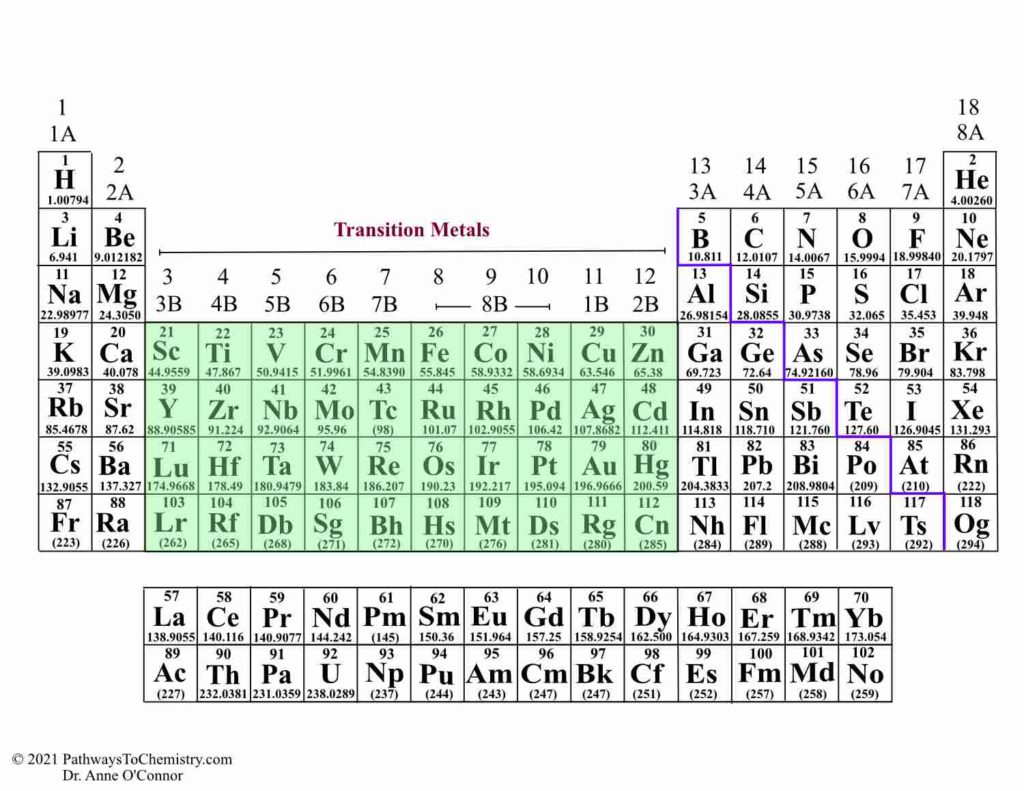\(\)Keep in mind that when referring to elements, the atoms occur in their most stable forms; that is for example, as monatomic, diatomic, or tetratomic species. For now, just to keep things simple, we will refer to the elements as being only monatomic or diatomic species. This simplifies matters greatly since only seven elements occur as diatomic species: hydrogen, nitrogen, oxygen, fluorine, chlorine, bromine, and iodine. The symbols for these elements are \(H_2,\;N_2,\;O_2,\;F_2,\;Cl_2,\;Br_2.\;and\;I_2.\;\)
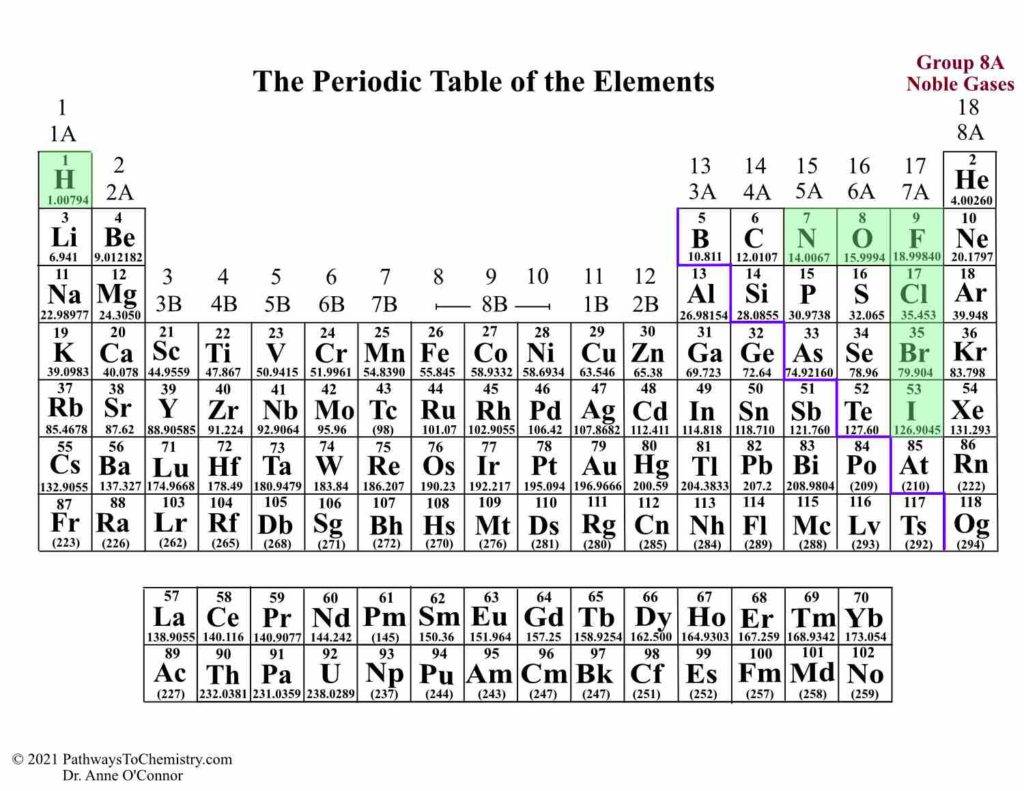 Elements highlighted in green exist as diatomic species. Notice that, if you leave out the hydrogen, the remaining six elements form an upside down L.
Elements highlighted in green exist as diatomic species. Notice that, if you leave out the hydrogen, the remaining six elements form an upside down L.
As you already know, the periodic table is a list of all known elements; some of which have only been synthesized in laboratories and have fleeting lifetimes. At first glance, the periodic table seems to be merely the listing of these elements, but it is within the arrangement of these elements in the table that a wealth of information is stored. The key to learning chemistry can be found in the structure of the periodic table. We can predict physical and chemical properties of an element by its position on the table.
The most obvious structure in the periodic table is the arrangement of atomic numbers. We will learn in the next section that these numbers indicate the number of protons within an atom. For example, the carbon atom has an atomic number of six and it contains six protons, whereas the oxygen atom has an atomic number of eight and it contains eight protons. The atomic numbers of the elements increase going from left to right and from top to bottom on the periodic table.
The horizontal rows of the periodic table are called periods. The period number is indicated outside of the periodic table on the left. In the figure below, the 4th period is highlighted in green. The uppermost row contains the two elements hydrogen and helium. This row is referred to as the first period. The number of the period increases from top to bottom. For example, the element sodium, Na, is in the third period as is the element aluminum, Al.
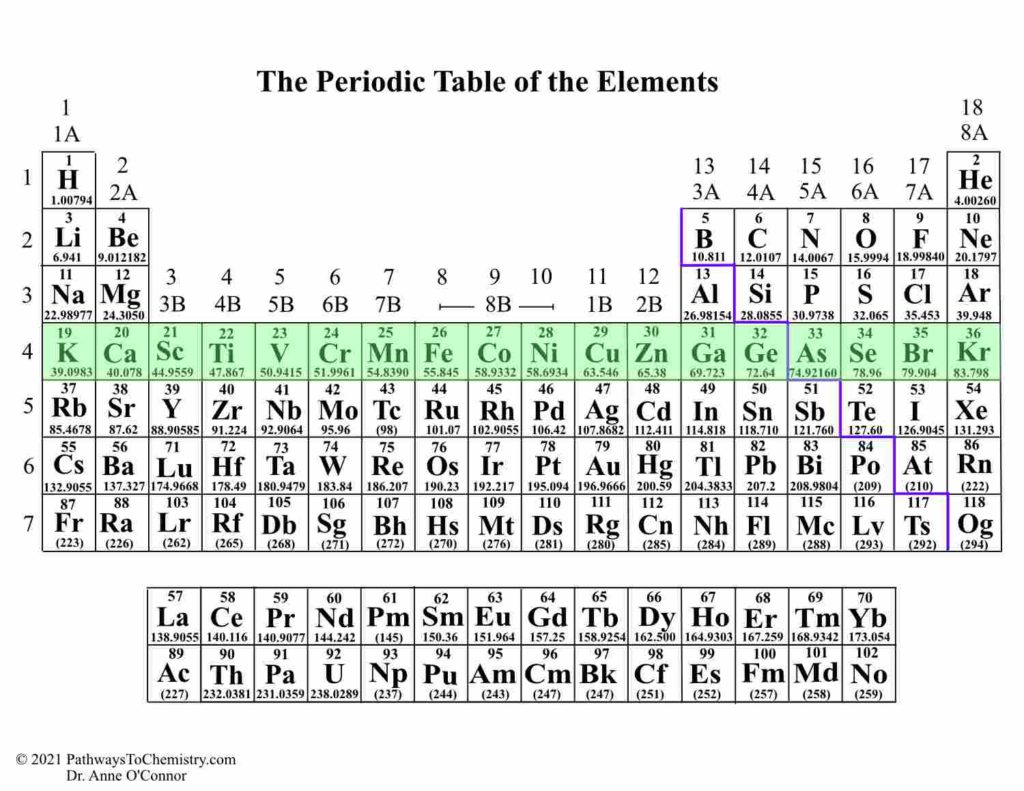
The periodic table is also divided up into vertical columns called groups. There are 2 numbering systems used: 1) from left to right the groups are numbered 1 to 18 and 2) from left to right the groups are listed numerically, that is 1A, 2A, 3B, etc. Elements within the same group display similar chemical activity. In the figure below, group 2 A is highlighted in green.
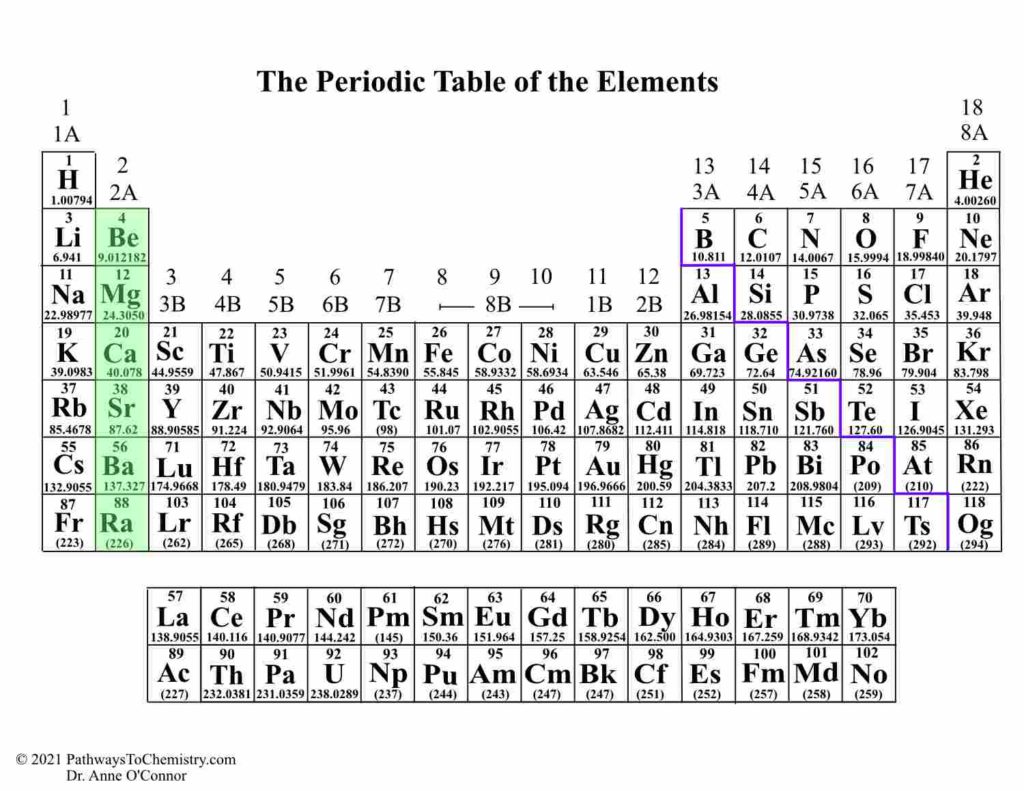
The A groups are known as the main group elements (Groups 1A to 8A) shown below. The main group elements are also referred to as the representative elements.
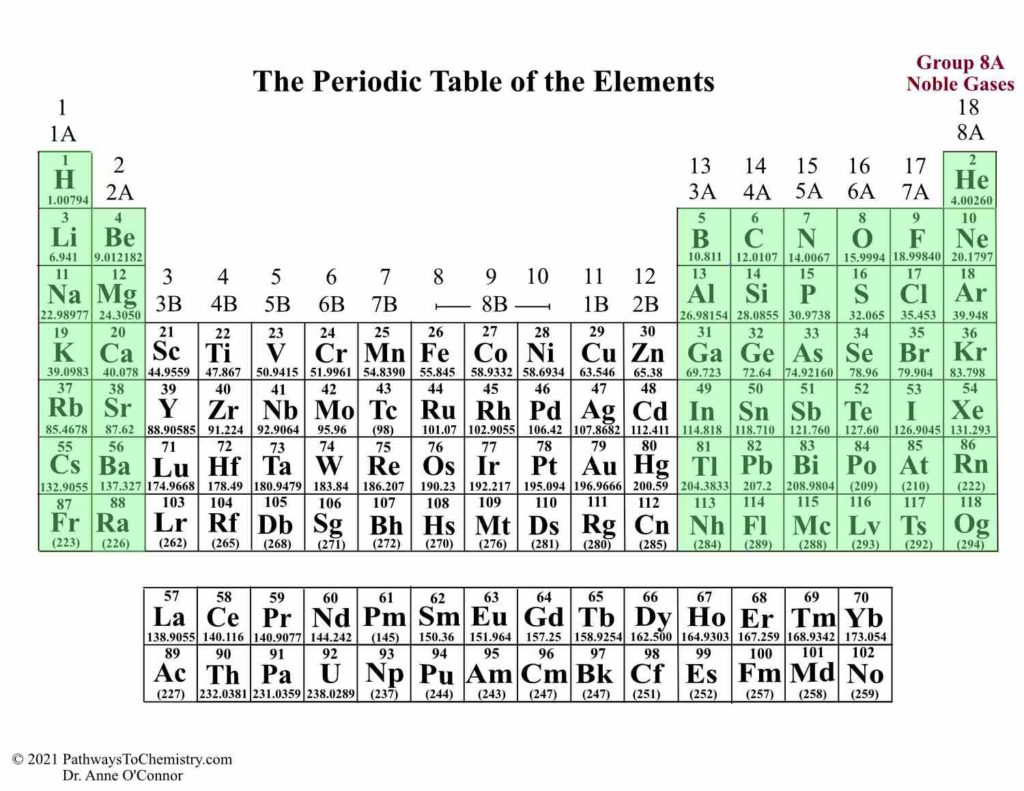
Main Group Elements contain metals, nonmetals, and metalloids (discussed later). Most exist as solids, several as gases, and several as liquids at normal temperatures and pressures. (0 °C, 1 atm). When investigating the various trends of the elements, our concentration will be on Main Group Elements. Of the eight groups making up the main group elements, four of the groups have special names.
Group 2 A: Alkaline Earth Metals
Group 7 A: Halogens
Group 8 A: Noble Gases
Elements in groups 1A and 2A, including helium, are in the region known as the s-block. Elements in groups 3A through 8A are in the region known as the p-block.
The transition metals are located in the central block (d-block) of the Periodic Table, within periods 4 through 7 highlighted in the figure. All transition metals are solids with the exception of mercury, Hg, which is a liquid at normal pressures and temperatures. Transition metals tend to form brightly colored chemical compounds due to the nature of their outermost electrons. Both industrial catalysts and biological enzymes contain transition metals.
The inner transition metals are located separate from and at the bottom of the main Periodic Table; this region is known as the f-block. These metals are composed of the Lanthanide Series which immediately follows the element lanthanum and includes the elements from cerium to lutetium, and the Actinide Series which immediately follows the element actinium and includes the elements from thorium through lawrencium. Of the Actinide Series, only the first three elements (thorium, protactinium, and uranium) naturally occur. All the others are synthesized in a laboratory.
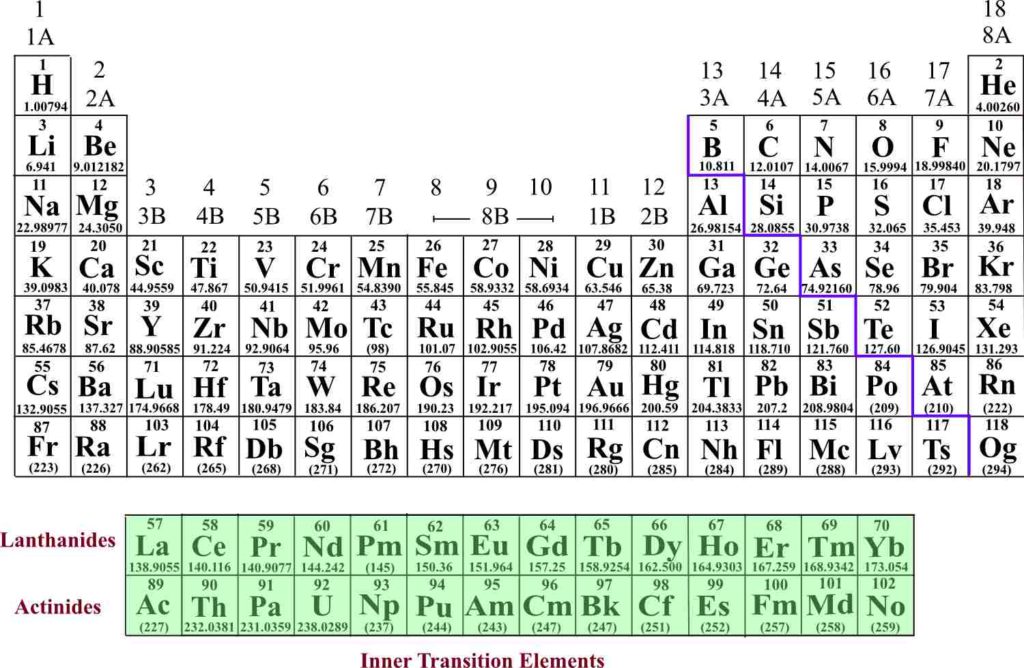
All the elements in the periodic table can be divided into three regions according to their properties: metals, nonmetals, and metalloids (also referred to as semi-metals).
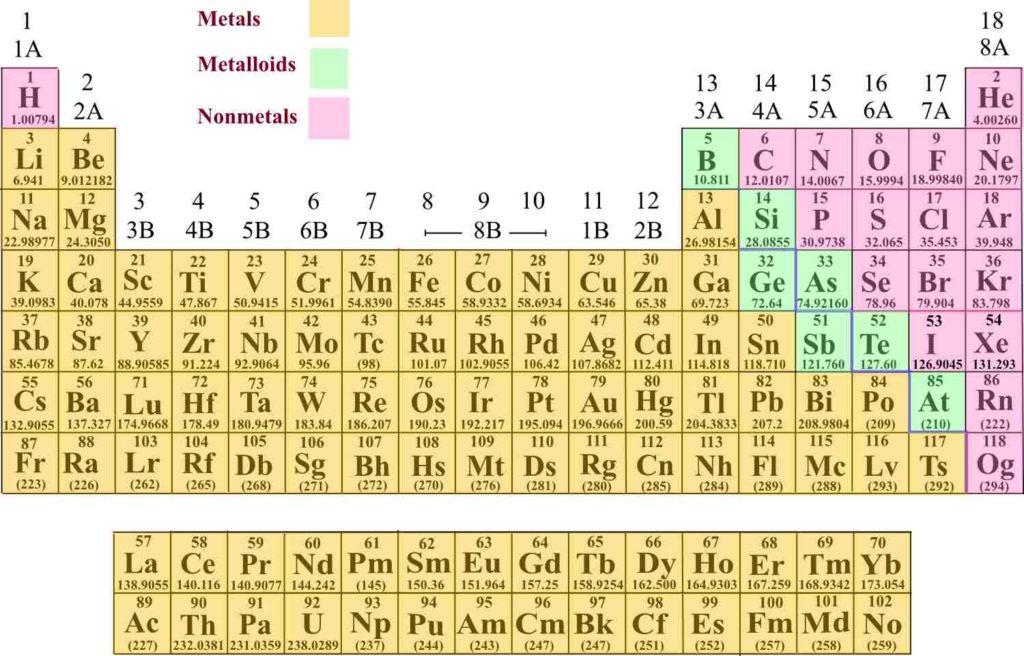
From the shaded area of the above periodic table, it is obvious that most of the elements fit into the category of metal. Their properties include an illustrious surface, the ability to conduct heat and electricity, and they are both malleable and ductile. With the exception of mercury (Hg) which is a liquid, all of the metal elements are solids.
Unlike metals, which exist as solids (with the exception of liquid mercury), nonmetals exist as solids, liquid, and gases at room temperature. For example, in the halogen group the element chlorine exists as a gas, the element bromine exists as a liquid, and iodine exists as a solid. The properties of nonmetals are also quite different from those of metals. Nonmetals tend to have dull surfaces. They are not conductors of electricity or heat, and the solids are brittle.
The remaining six elements are called metalloids because their characteristics and properties overlap in both the metals and the nonmetals, that is, physical properties of metals and chemical properties of nonmetals. The metalloids are also referred to as semi- metals. An important property of metalloids is their variable conductivity. Because of this property, they also go by the well-known name of semiconductors, which has played a big part of putting Silicon Valley on the map.
Worksheet: Periodic Table Part 1
Worksheet: Periodic Table Part 2
Exercises For Elements and the Periodic Table
Exercise 1. Find and identify the element in period 5, group 4A. Is this a metal, nonmetal, or a metalloid?
Check Answers to Exercises 1 through 4
Exercise 2. Answer the following question for the elements scandium through zinc.
a) Are they metals, nonmetals, or metalloids?
b) Are they considered main group elements, transition elements, or inner transition elements?
c) Provide the name of an element that would have similar chemical properties to Sb.
Check Answers to Exercises 1 through 4
Exercise 3. Give the names and symbols of the alkali metals and the halogens.
Check Answers to Exercises 1 through 4
Exercise 4. Provide an example of each of the following: metal, nonmetal, metalloid, alkali metal, transition element, inner transition element, lanthanide, d-block element, noble gas, halogen, alkaline earth metal, and an s-block element.
Check Answers to Exercises 1 through 4
Exercise 5. Label the following on the blank periodic table: metals, nonmetals, metalloids, alkali metals, transition elements, inner transition elements, lanthanides, actinides, d-block elements, noble gases, halogens, chalcogens, pnictogens, alkaline earth metals, d-block elements, f-block elements, and s-block elements. Use a legend for the metals, nonmetals, and metalloids.
Check Answer and/or View Worked out Solution for Exercise 5–Periodic Table Design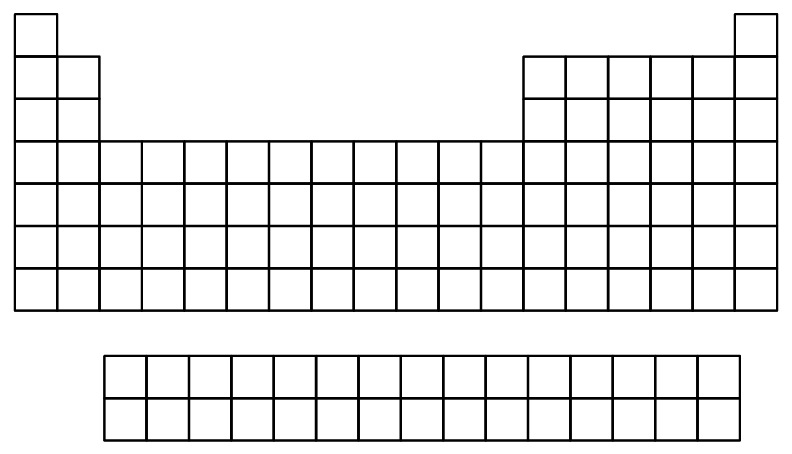
Go Back to Atoms, Ions, and Molecules
Go Back to Study Guide List for General Chemistry 1

